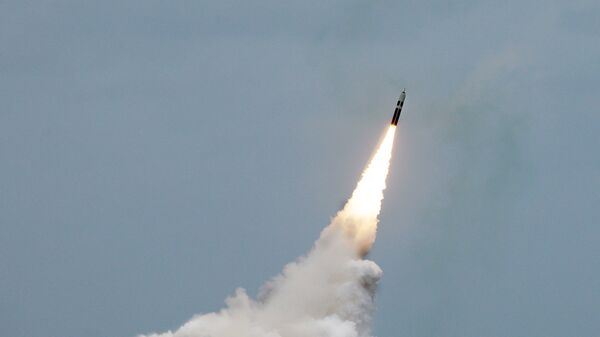National Nuclear Security Administration (NNSA) Deputy Administrator for Defense Programs Charles Verdon told reporters at the 2019 Defense News Conference on Wednesday that neither the B61-12 nor W88 ALT 370 nuclear weapons will be delivered in 2020, when they were initially scheduled to be completed. It’s just the latest setback for two over-budget programs.
Verdon said the bombs would be ready for production “roughly around the same time,” which would be roughly 18 months after their scheduled time, although that delay might shrink.
The latest problem has arisen with off-the-shelf parts for the new weapons expected to last 20 to 30 years, but found unreliable during heavy stress testing, Defense News reported, which hosted the event at which Verdon spoke. Now, the NNSA must find replacements instead of using existing hardware.
“The delay to both the B61-12 and W88 ALT 370 highlights the enormous scope of work already on NNSA’s overburdened plate and the significant execution challenges facing the modernization effort," Kingston Reif, director for disarmament and threat reduction policy at the Arms Control Association, said at the Defense News event.
The programs are just two of five massive overhauls set in motion by the Obama administration in 2010 - a $1.5 trillion, 30-year project to update the entire US nuclear arsenal, which according to the Federation of American Scientists numbers 5,500 stockpiled or deployed weapons, plus another 2,385 retired ones. The program also includes new and updated facilities, a new stealth bomber now known as the B-21 Raider and a new delivery system now known as the Long Range Standoff (LRSO) weapon.
A major phase of the program was completed at the start of the year, when a 20-year overhaul of the US Navy’s W76 submarine-launched ballistic missile warhead was finished. That set in motion a new project masterminded by US President Donald Trump, the W76-2, a low-yield variant the NNSA hopes to deliver in 2020 and have ready for production by 2024.
Like the W76, the W88 is a thermonuclear device designed for the Trident II ballistic missiles carried by US submarines, although it’s nearly five times as powerful as the W76, with a 475-kiloton explosive yield. The $2.6 billion Alteration 370 program was reported as 11% over-budget in a November 2018 Government Accountability Office (GAO) report.
Likewise, the same report found the 12th model of the B61 gravity bomb, a mainstay of its nuclear bomber fleet around the world, was 1.2% over-budget. The program’s baseline cost was estimated at the time to be $8.3 billion.
The B61 family of bombs have variable yields, ranging from 0.3 to 400 kilotons. However, the B61-12, with its earth-penetrating capability, will have a maximum yield of just 50 kilotons. For perspective, that’s a little more than three times as powerful as the bomb dropped by the United States on the Japanese city of Hiroshima in August 1945 at the close of World War II.
Together with intercontinental ballistic missiles, the submarine-launched ballistic missiles and air-dropped gravity bombs give the US a nuclear triad, effectively guaranteeing its ability to respond to a nuclear attack. Only the US, Russia and India have that capability, although China is developing an air-launched ballistic missile that would ensure its response ability as well.
However, with the Pentagon testing a new cruise missile just days after leaving the Intermediate-Range Nuclear Forces (INF) Treaty with Russia last month, fears have grown of the potential for Washington to use nuclear weapons offensively. In February 2018, the Trump administration’s Nuclear Posture Review summarized the international situation as a “return to Great Power competition,” noting the US’ chief adversaries were no longer stateless terrorist networks, but two nuclear-armed powers: Russia and the People’s Republic of China.
An unclassified document accidentally published in June by the US Joint Chiefs of Staff described how the weapons of mass destruction might be used to reverse a deteriorating conventional war.
“Employment of nuclear weapons can radically alter or accelerate the course of a campaign,” the document says. “A nuclear weapon could be brought into the campaign as a result of perceived failure in a conventional campaign, potential loss of control or regime, or to escalate the conflict to sue for peace on more-favorable terms. The potential consequences of using nuclear weapons will greatly influence military operations and vastly increase the complexity of the operational environment.”


